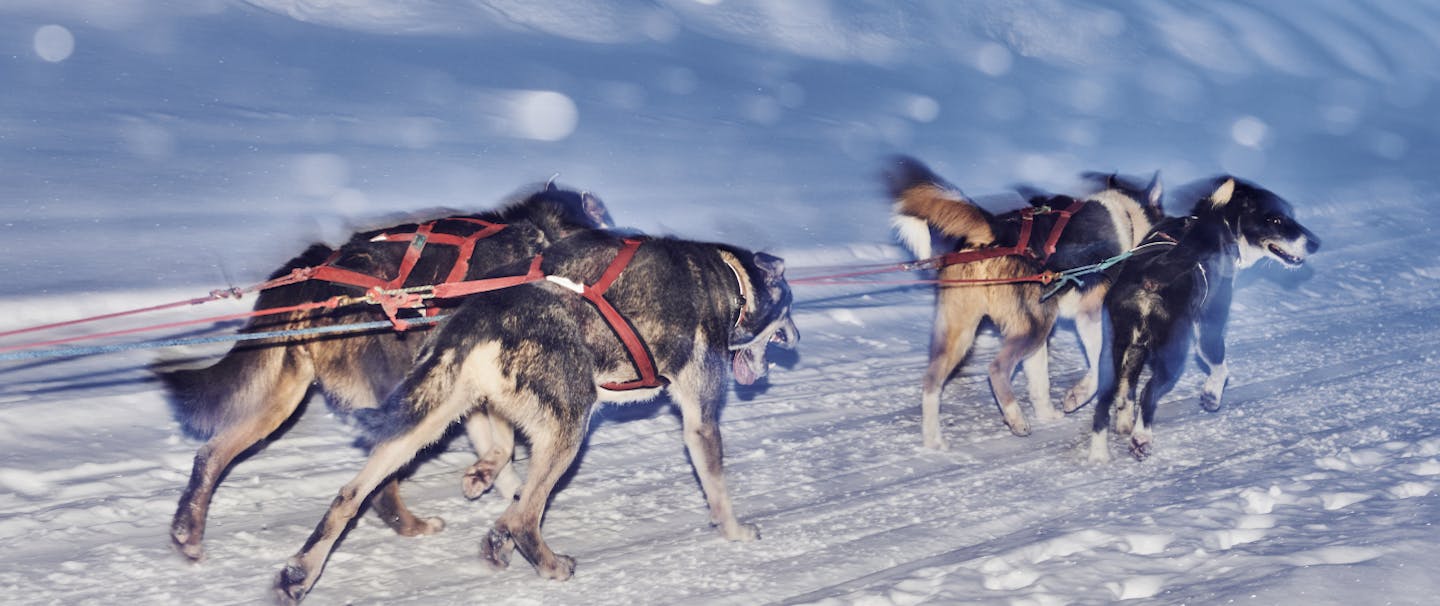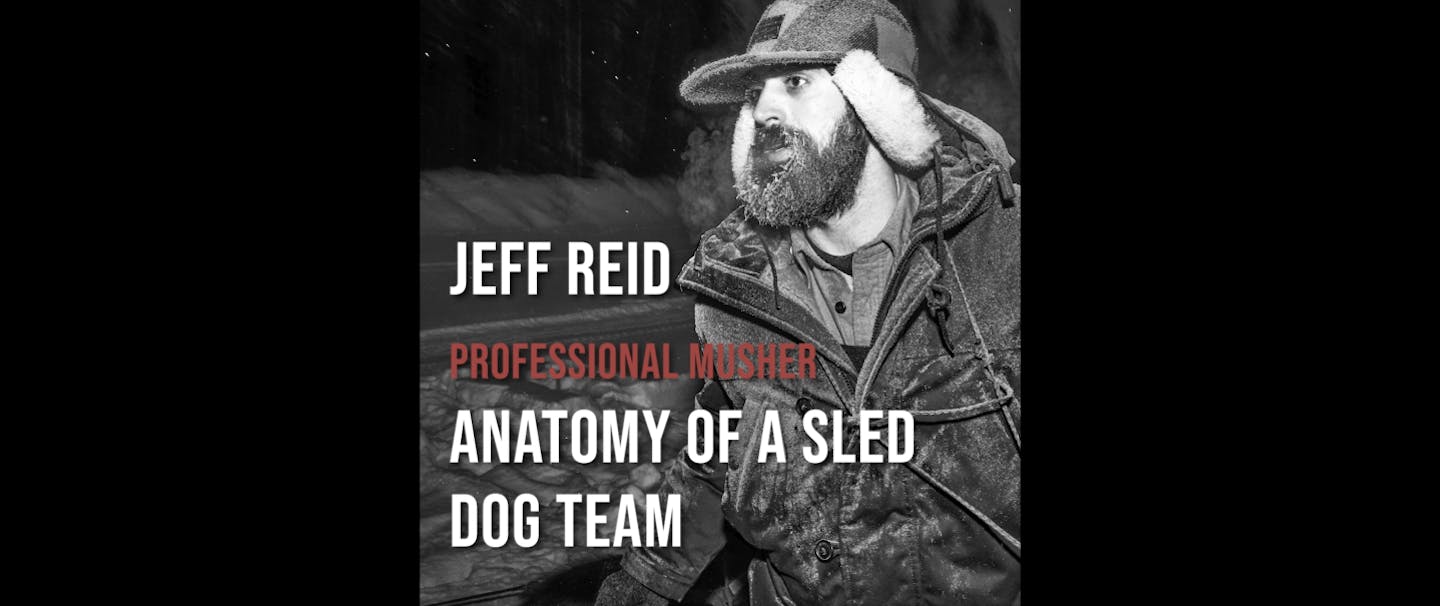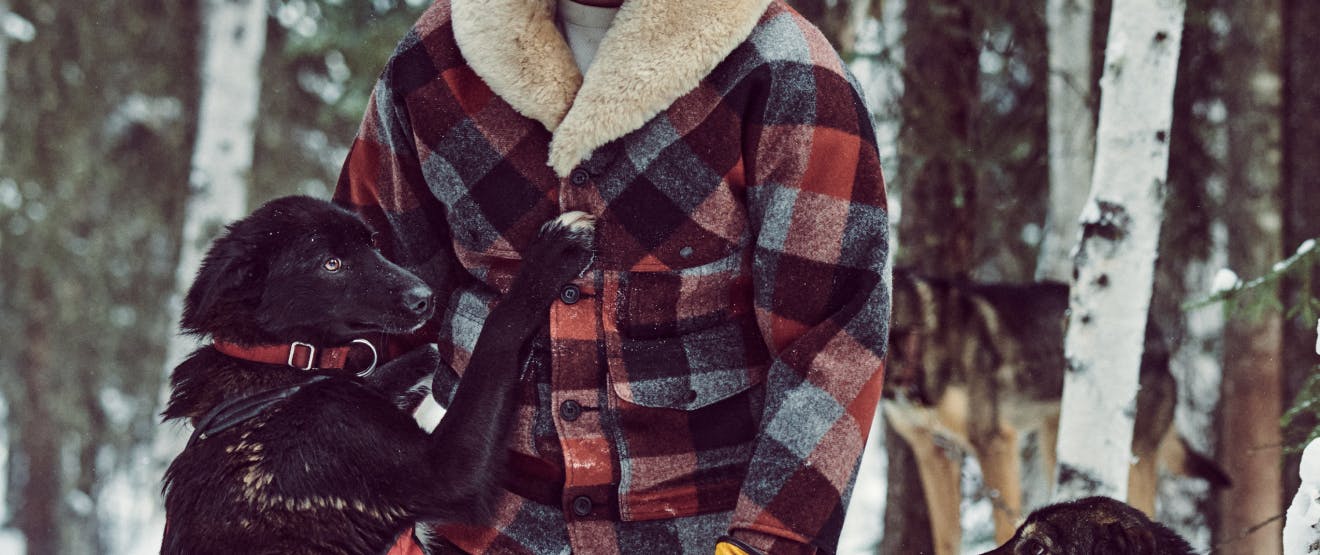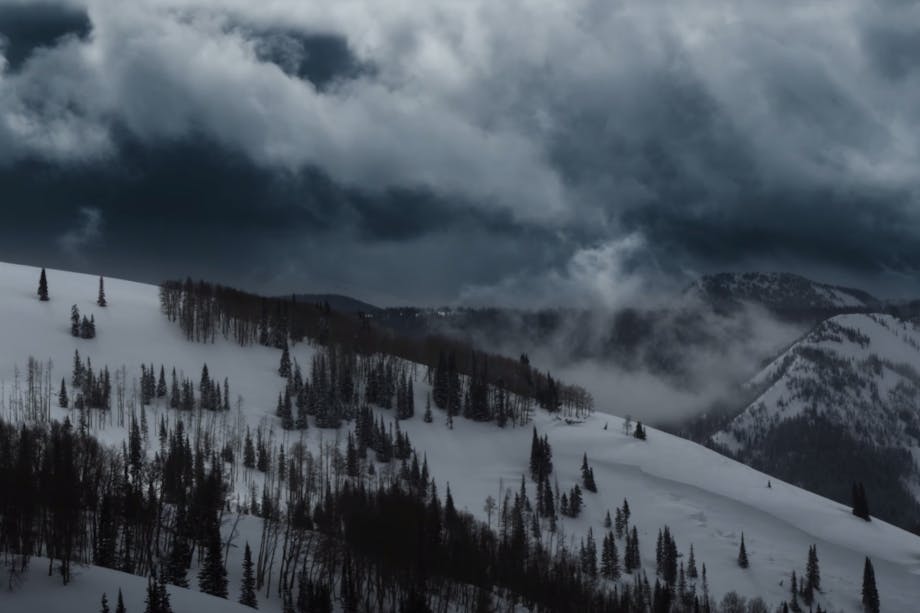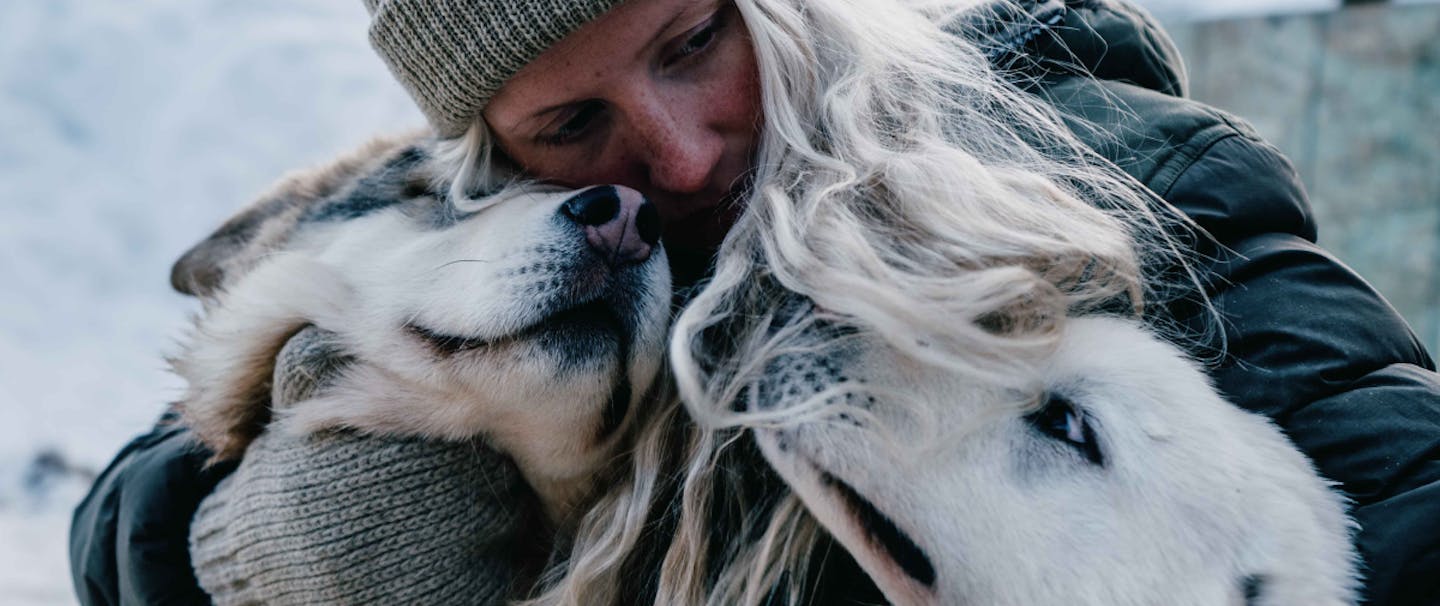In the heart of winter, few things are as beautiful as a string of dogs working in tandem, each one paired with another on opposite sides of a gangline, eagerly leaning forward with one goal in mind. Their eyes are focused ahead, puffs of steam billow from their snouts, and the only sound is that of their paws digging into the snow and the sled trailing behind them. It is a sight that can take your breath away, but inside that string of dogs, a complex system is at work, one that ensures that the team can navigate difficult trail conditions and an ever-changing environment safely and efficiently.
“Building a good team takes months of work and constant monitoring and training by a musher,” says Lauro Eklund, co-owner of Skookum Expeditions and a competitive race musher. “Each position on the line has a specific role, and the team needs to operate as one. Every musher knows where each dog needs to be on the gangline.”


The most important positions are the first pair of dogs and the last. Known respectively as the lead dogs and the wheel dogs, they act as bookends.
When a musher starts working with a new dog, they will assess their intelligence. Any dog that is quick to learn and reply to commands is pegged for work on the front end of the line, possibly as a lead dog.
The lead dogs are the first to encounter the many obstacles and issues that arise on the trail. Lousy snow, sharp drop-offs, bad ice, and open water are common, and a musher needs to know that his eyes and ears up front are alert and focused. A good lead will react instinctively and make snap decisions that affect the entire team. They set the pace and ensure that the gangline stays taut, which is why mushers look for confident dogs that are hard drivers. They are also the ones that respond to the musher’s commands of “gee” (right turn) and “haw” (left turn). It is a challenging position to be in, and mushers zealously guard their prized lead dogs. In mushing circles, stellar lead dogs are as well known as their owners.
The wheel dogs act as the powerhouse for “busting a load,” moving a loaded sled up and over obstacles and bad snow. Often they are the biggest dogs in a team, and they need to be even-tempered and able to withstand the rigors of a long run in the harnesses with the sled right behind them.
The wheel dogs act as the powerhouse for “busting a load,” moving a loaded sled up and over obstacles and bad snow. Often they are the biggest dogs in a team, and they need to be even-tempered and able to withstand the rigors of a long run in the harnesses with the sled right behind them. A good set of wheel dogs will steer the sled’s front end through tight corners, allowing the musher to focus on the rear end and conserve energy.
The next part of the team is the swing and point dogs. Positioned directly behind the lead dogs, their job is to help steer the team around corners. By following their leaders and not straying from the trail, they ensure that the sled doesn’t swing wide, which can lead to injuries and other issues. Mushers will often position newer dogs that they think might become good leads in these two groups. The position can offer a dog the chance to apprentice while learning the tricks of pulling the sled.
Their job is pretty simple; all they have to do is follow the furry behind in front of them.
The rest of the line is composed of the team dogs, the powerhouse of the string. They maintain the speed set by the lead dogs. Their job is pretty simple; all they have to do is follow the furry behind in front of them. It is also where many competitive mushers will place their prized lead dogs in long races, to keep them mentally fresh during the easier part of races before placing them upfront for crucial sections.
A musher must constantly monitor the health and mental status of these furry racing machines. Some dogs might need to be separated, females might be in heat and need to be positioned away from the males, or a dog might just be having a bad day and need a change of pace. It’s all par for the course. When functioning well, a good team needs little communication from the musher and will operate like a well-oiled machine that chews up the miles. It’s a thing of beauty and something everyone should see once in their life.
